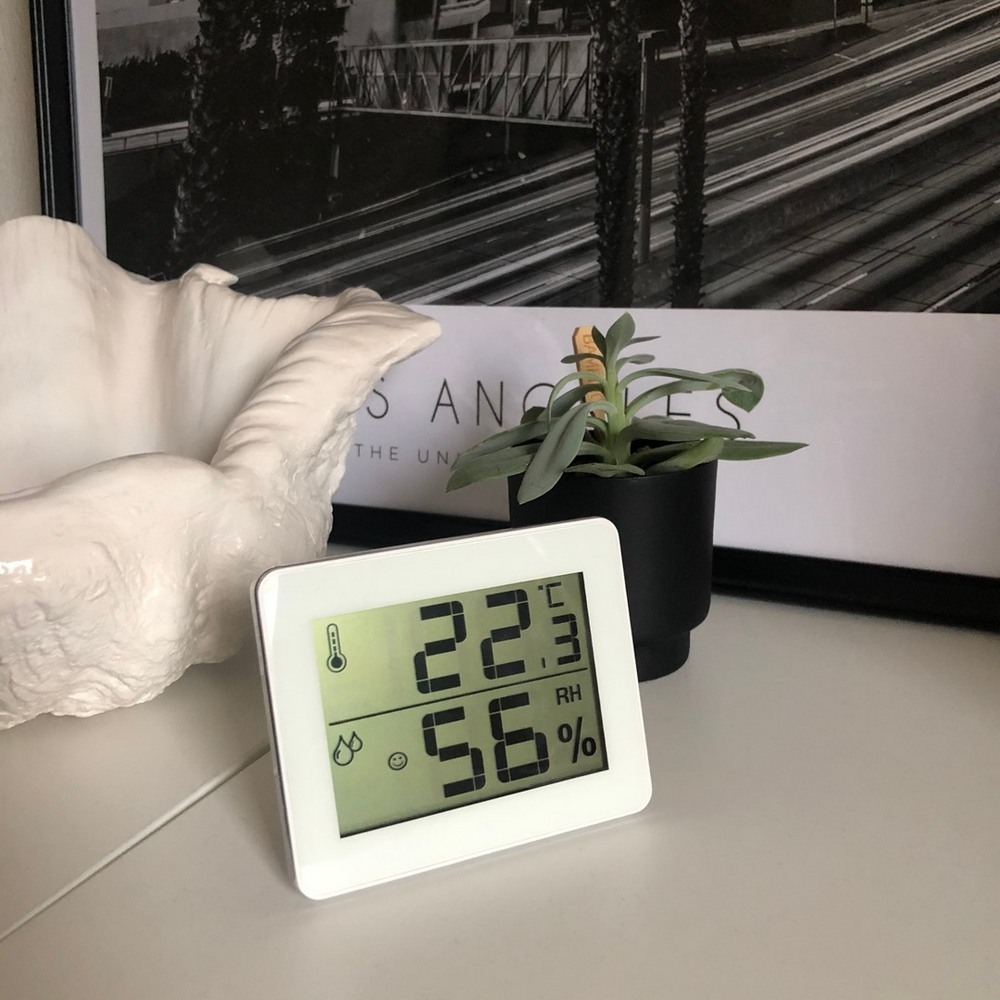 Humidity is a common issue in many homes, and achieving the right balance between too much and not enough can be very tricky.
Humidity is a common issue in many homes, and achieving the right balance between too much and not enough can be very tricky.
It’s important to ensure that you have good air quality, both for your comfort and your health. Afraid you need to be an expert to check the humidity level?
The good news is that you don’t need to be a professional and that checking the humidity in your home is actually a very simple process.
If you’re ready for better indoor air and a healthier lifestyle, it’s time to check out the humidity levels and fix them.
What is a Good Level of Indoor Humidity?
It’s pointless going forward if you don’t know what a good level of humidity in your house is.
Your chosen dehumidifier or humidifier will keep the moisture levels in the home in check, ensuring that the humidity level remains at a safe and healthy percentage. If you are struggling to decide which room it needs to be placed in, there are a few key places that are ideal.
A bathroom fan or dehumidifier is a common choice because of the moisture levels in this particular room. It’s typically very damp, and perfect for high humidity levels. Similarly, the kitchen produces a lot of steam which makes it a typically damp space.

Similarly, something as simple as the heating system in your home can be responsible for dry air and low humidity levels inside. This is why the moisture balance is so important.
The bedroom and living room can suffer from both high and low humidity levels alike.
How Do I Test the Humidity in My Home?
If you want to check the humidity level in your home, you will need a hygrometer or an indoor humidity monitor. This can be used to measure the relative humidity so that you can determine if you should get a small dehumidifier or a humidifier – depending on the moisture levels.

This method offers very accurate results, and some models of humidifier and dehumidifier actually come with a monitor installed so that you can keep an eye on any changes to the indoor humidity in your home, alerting you when the air becomes too dry or moist.
However, there are other signs that there is too much humidity in your house. Foggy windows when you wake up is a key sign that there is an excess of water in the air.
You can also use the ice cube method to determine the humidity in your house. All you have to do is fill a glass with water and place some ice cubes in it.
Leave it for four minutes and then go back to check the glass. If there is condensation on the outside, you have too much humidity, if there is no condensation your humidity levels are likely too low.

Via: @foreverplantmom
While this can be quite a good method, the ice cube and glass technique is not as effective as using an actual hygrometer or a humidity monitor.
Is There an App to Check Indoor Humidity?
Yes, there are a couple of apps available that are able to test the humidity inside the house. While this service has been praised by many customers, there are still questions over the reliability of the apps.
Many of them provide great results for the outdoor humidity levels, but it can be harder to determine the indoor air quality.

Via: @tfa.dostmann
As a result, it is recommended that you stick to more traditional methods – using a hygrometer or a humidity monitor to properly determine low or high humidity.
What are the Dangers of Too Much or Too Little Humidity?
There are health risks associated with both high humidity and low humidity that you should consider when looking at purchasing a humidifier or dehumidifier. The quality of the air in your home can be massively impacted by the humidity.
Too Much Humidity:
- Respiratory issues
- Fatigue
- Muscle cramps
- Fainting
- Mold growth in home
- Increased levels of dust mites in house
- Allergy and asthma attacks
Low Humidity:
- Dry skin
- Cracked and bleeding skin
- Bloody nose
- Itchy skin and eyes
- Cold and flu symptoms
- Chapped and cracked lips
- Allergy and asthma attacks
Important steps for preventing mold growth include maintaining acceptable humidity levels, and this is the responsibility of the landlord which is typically laid out in the tenancy or lease agreement.
To Conclude
Your home’s humidity levels are important, and you want to keep both you and your family safe from poor health as well as the risk of mold thanks to excess water in the air. Similarly, dry air can lead to painful symptoms that are long-lasting.
So, next time you go to turn the heating on or you’re having a shower, maybe switch on the humidifier or dehumidifier (depending on the humidity) so that you can keep the moisture levels in your home to a safe standard.
